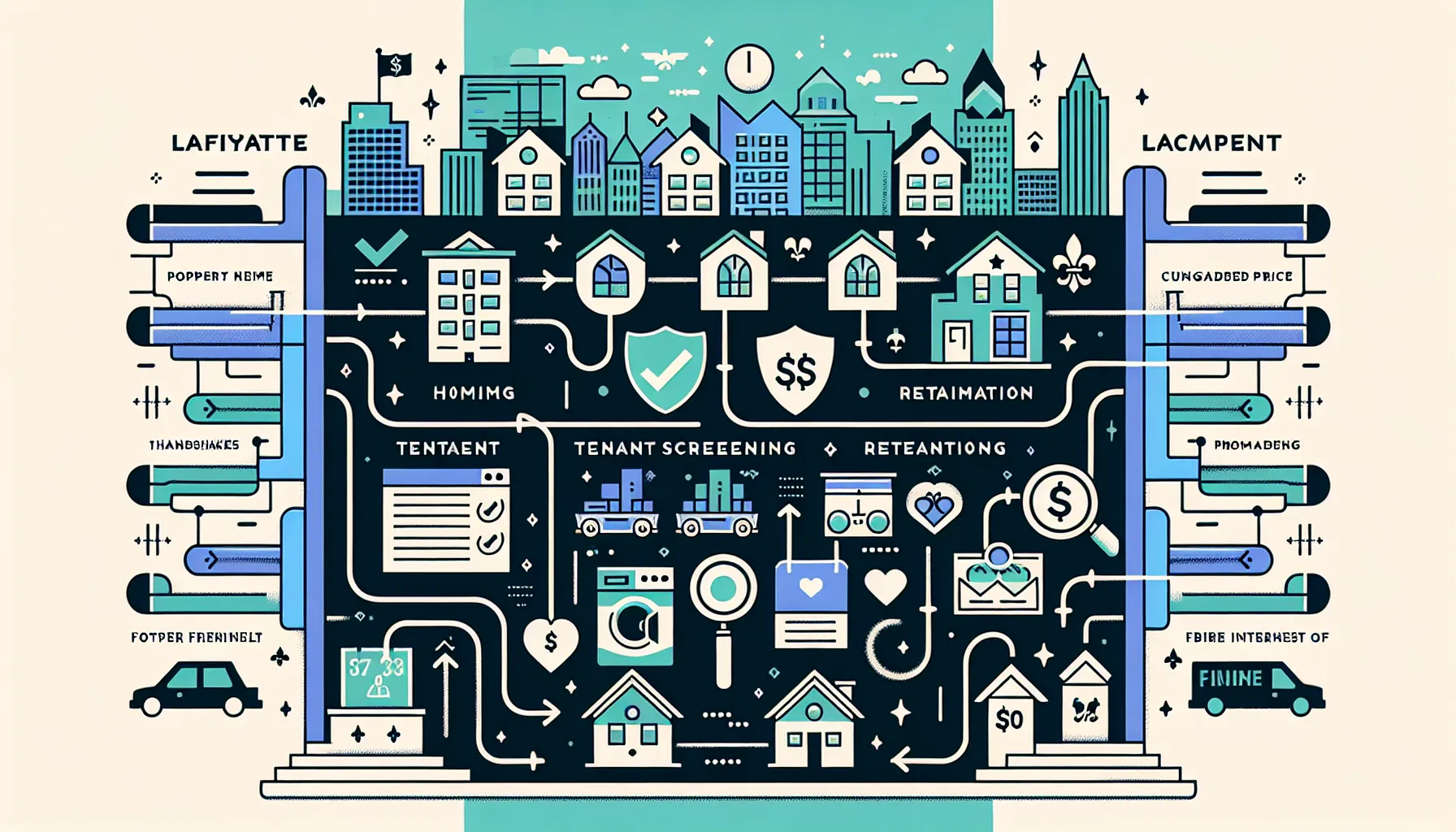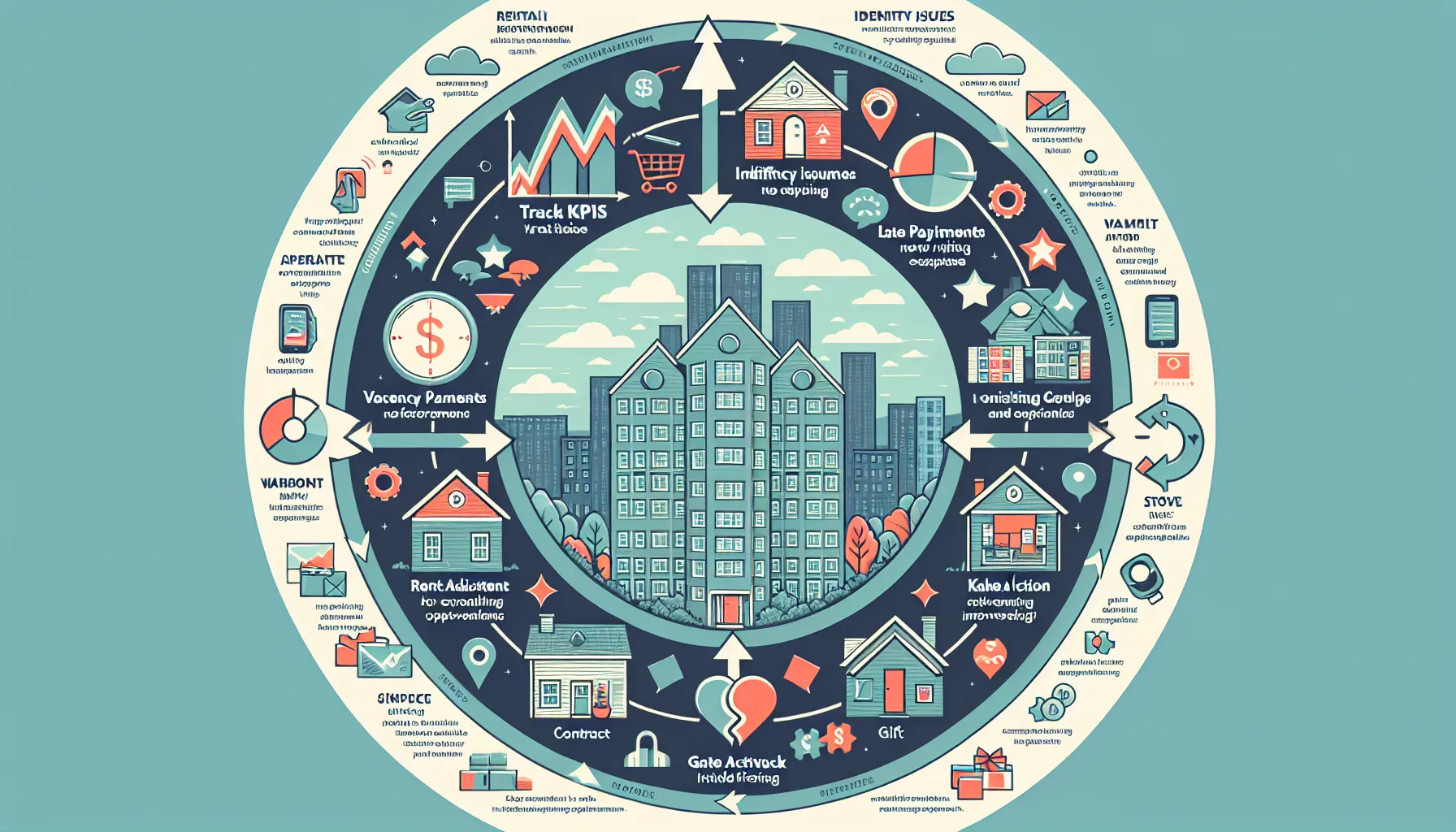If you own property in Lafayette and want your rental income to reach its full potential, you’re not alone. I’ve met countless landlords who worry about pricing, tenant turnover, and what it takes to stand out in a crowded market. Have you ever wondered what keeps a rental profitable year after year? Your concerns are valid, the right strategy can mean the difference between steady gains and frustrating losses.
Let’s break down how an effective Lafayette rent optimization plan can secure your financial peace of mind. Whether you manage one unit or a portfolio, there are proven methods to boost your net income and protect what’s yours. Are you ready to see how the top properties in Lafayette keep vacancies low and returns high? Let’s immerse together.
Key Takeaways
- A Lafayette rent optimization plan starts with understanding local rental market trends and seasonal pricing fluctuations.
- Competitive pricing, careful tenant screening, and thoughtful retention strategies help minimize vacancies and maximize rental income.
- Investing in property upgrades and value-added amenities, such as in-unit laundry or pet-friendly features, can boost rent and tenant interest.
- Keeping up with Lafayette’s legal and regulatory landscape protects your investment and ensures compliance with fair housing laws.
- Leveraging digital tools for marketing, rent collection, and maintenance requests streamlines operations within a Lafayette rent optimization plan.
- Regularly reviewing performance data and adapting strategies allows for continuous improvement and sustained rental profitability.
Understanding Lafayette’s Rental Market Dynamics

Success in Lafayette’s rental market starts with recognizing the big picture. This area has witnessed steady population growth, fueled by a vibrant local economy and a constant influx of students and professionals. The result? Demand for quality rentals remains strong, but so does competition among landlords.
Rental rates in Lafayette fluctuate throughout the year, often peaking during late spring and summer. I’ve noticed that properties near key amenities, like university campuses, major employers, and popular parks, tend to command premium rents. But, new listings and rental inventory regularly adjust, which means landlords can’t afford to be complacent.
To optimize your returns, it’s critical to track local trends in pricing, vacancy rates, and lease-up times. I always encourage property owners to keep an eye on competitors’ listings and think analytically about what makes a property stand out. Even subtle neighborhood shifts can tip the balance, creating both risk and opportunity in equal measure.
Key Strategies for Rent Optimization

Optimizing rent isn’t about a single trick, it’s a thoughtful mix of actions. Here’s how I approach it:
Market Analysis and Competitive Pricing
Before setting a rental rate, I dig into comparable listings and recent lease agreements nearby. Are similar properties charging more for less? Have new renovations bumped up prices? I always factor in seasonality, summer often sees higher turnover, which can support strategic rent increases if the market allows.
A pricing tool or access to recent market data can be invaluable. This is how I determine an attractive yet profitable price point. Sometimes, it pays to start slightly below the competition to attract a rush of applicants, then raise rents for renewals as demand solidifies.
Tenant Screening and Retention
Finding a great tenant is just the start. I never underestimate the value of reliable, long-term renters. Strong screening, credit checks, background verification, and solid references, reduces the risk of unpaid rent or damages. But I pay just as much attention to keeping good tenants happy. Quick responses to maintenance requests, periodic check-ins, and small upgrades can build loyalty. Isn’t it easier to work with someone you trust and who feels heard?
Renewal incentives, think minor upgrades or a small rent discount, can mean another year of stable income.
Property Upgrades and Value-Added Amenities
Small changes matter. I’ve seen $500 spent on new lighting or hardware yield $50 a month more in rent. Adding washer/dryer units, updating kitchens, or installing air conditioning can boost both rent and attractiveness. In Lafayette, properties with dedicated parking, pet-friendly policies, and fiber internet hold a real edge.
When planning upgrades, I run a simple calculation: how long will it take to earn back the investment? This helps me prioritize improvements that move the needle without overextending my budget.
Legal and Regulatory Considerations in Lafayette

Every landlord knows how quickly laws can change. In Lafayette, staying informed about local rental regulations is one of the smartest moves I can make.
Lease agreements must follow state and municipal guidelines, from required disclosures to habitability standards. Security deposit limits and the procedures for handling them are tightly defined. Ignoring these details can be costly, so I make it a point to refresh my knowledge periodically.
There are also fair housing laws to consider. Discriminatory practices, even accidental ones, can bring heavy penalties. This is why I standardize application processes and use clear, objective criteria for every applicant.
Finally, I pay attention to local ordinances around maintenance, inspections, and tenant rights. Annual or semi-annual inspections, often priced at $75, are common in professional management packages here, and they safeguard my property’s long-term value.
Leveraging Technology for Efficient Rent Management

Technology is a game-changer in rental management. I rely on digital tools to streamline tenant screening, collect rent online, and track maintenance requests. These platforms not only save time but also improve recordkeeping and reduce mistakes.
Marketing is another area where technology shines. Facebook Boost and Google AdWords, both regularly available for around $150, can place my listings in front of quality tenants quickly. I’ve had units rent within days thanks to strategic online exposure.
Automated reminders for lease renewals and inspections also keep me ahead of potential issues. I don’t have to worry about missing important deadlines or neglecting routine property care. By integrating technology at every step, I give myself more time to focus on big-picture strategy.
Monitoring Performance and Adjusting Strategies

No plan works without consistent review. I track my key performance indicators every month, vacancy rates, late payments, and net yield, so that I know which properties are excelling and which need immediate attention.
If occupancy drops, I review rent prices, listing quality, and lease incentives. If expenses creep up, for example, rising maintenance costs, I reassess vendor contracts and project plans, sometimes renegotiating or seeking alternatives. Even tenant feedback is invaluable: surveys and quick check-in calls help identify where I can improve and where expectations are being met.
When I spot a trend, like higher demand for pet-friendly units or homes with smart features, I adjust my offerings. Continuous improvement keeps me competitive and protects my income.
Conclusion
Developing a Lafayette rent optimization plan means embracing change, leveraging data, and consistently investing attention. I’ve found that small efficiencies and strategic upgrades add up, quietly shifting the balance sheet in my favor year after year. Whether you’re building your first rental portfolio or fine-tuning a seasoned set of properties, the right approach makes all the difference.
Remember, your investment is more than just numbers on a spreadsheet, it’s a vehicle to build lasting wealth and stability. If you take time to understand the local landscape, use reliable tools, and cultivate strong tenant relationships, sustainable success will follow. What step will you take next to increase your returns?
Frequently Asked Questions about Lafayette Rent Optimization Plans
What is a Lafayette rent optimization plan?
A Lafayette rent optimization plan is a strategic approach for property owners to maximize rental income while minimizing vacancies and expenses. It involves market analysis, competitive pricing, tenant retention strategies, property upgrades, and consistent performance reviews tailored to Lafayette’s rental market dynamics.
How can I increase rent without losing good tenants in Lafayette?
To increase rent without driving away quality tenants, offer renewal incentives such as small upgrades or discounts, communicate transparently about market changes, and maintain responsive service. Prioritizing tenant satisfaction can make rent adjustments more acceptable and encourage long-term occupancy.
Which amenities add the most value for Lafayette rentals?
In Lafayette, amenities like in-unit washer/dryer, updated kitchens, dedicated parking, pet-friendly policies, and high-speed internet tend to attract premium rents and more applicants. Property owners should gauge demand and calculate potential returns before making upgrades.
How often should I review my Lafayette rent optimization strategy?
It’s best to review your rent optimization plan at least quarterly. Track key indicators like vacancy rates, rent payments, and tenant feedback to identify areas for improvement. Adjust pricing, incentives, and marketing efforts as the local market shifts.
What legal requirements must Lafayette landlords follow?
Lafayette landlords must comply with state and municipal rental laws, including security deposit limits, lease disclosures, habitability standards, and fair housing regulations. Staying updated on local ordinances regarding inspections and tenant rights is essential to avoid penalties.
What is the best way to market Lafayette rental properties online?
Using digital tools like Facebook Boost, Google AdWords, and popular rental listing sites is effective for reaching quality tenants quickly. High-quality photos, detailed descriptions, and timely responses to inquiries can set your Lafayette rental apart in a competitive market.
